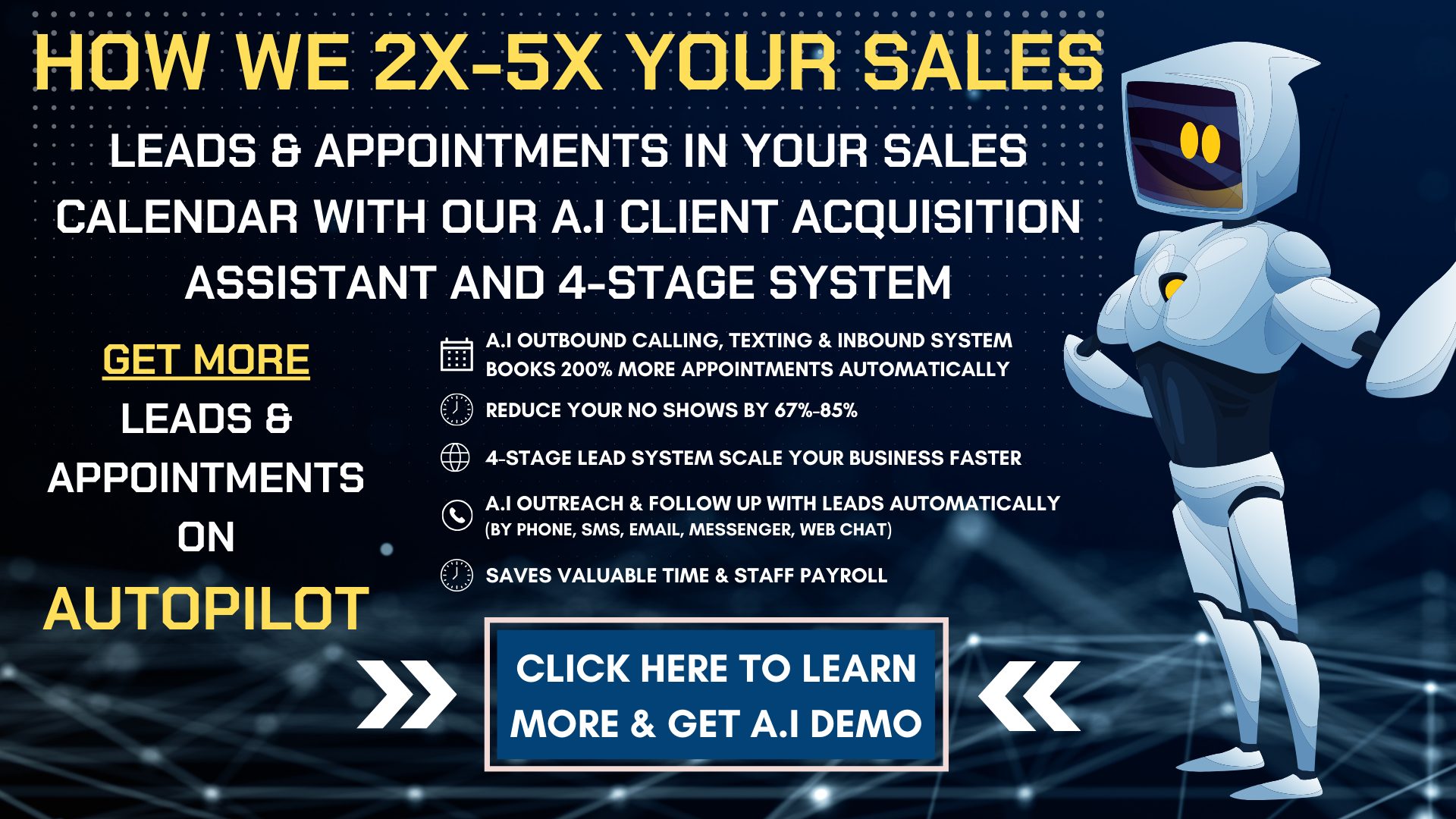Lead generation is a crucial aspect of growing a business and building a robust sales pipeline. By implementing proven strategies and techniques, businesses can effectively attract and generate new leads. In this article, we will provide actionable tips on how to generate new leads and boost business growth.
Key Takeaways:
- Implementing effective lead generation strategies is essential for attracting new leads.
- Utilize various lead generation techniques to capture the attention of potential customers.
- Follow proven lead generation methods to optimize lead conversion and increase sales.
- Explore innovative lead generation ideas to stand out from the competition.
- Adapt lead generation tactics according to the evolving preferences of your target audience.
Why Lead Generation is Important
Lead generation plays a vital role in the growth and success of a business. It is important to understand the importance of generating new leads and the benefits it brings for business growth and development.
When a business effectively generates new leads, it expands its customer base, reaching potential customers who may have not been aware of its products or services. By attracting these new leads, businesses increase their chances of converting them into customers and increasing sales. Generating leads also helps to build brand awareness as businesses establish their presence and reputation in the market.
The role of lead generation in business growth is multifaceted. It enables businesses to nurture relationships with potential customers, understanding their needs, and building trust. By engaging with leads and providing them with valuable information, businesses can guide them through the purchasing process, ensuring a greater chance of conversion.
Furthermore, lead generation is essential for maintaining a steady flow of prospects. As businesses nurture leads, they can build a solid pipeline of potential customers, ensuring a consistent stream of opportunities for sales and growth. Without lead generation, businesses may struggle to find new sales opportunities and may rely solely on existing customers, limiting their potential for expansion.
Overall, lead generation is a critical component of a successful business strategy. By effectively generating new leads, businesses can increase their customer base, boost sales, build brand awareness, and ensure continuous growth. Investing time and resources into lead generation is essential for long-term success and allows businesses to stay ahead in today’s competitive market.
The Basics of Lead Generation
The process of lead generation involves several fundamental steps. It begins with offering something of value, known as a lead magnet, to prospective leads. This offer is then promoted through various channels, leading interested visitors to a landing page.
On the landing page, a lead capture form collects the visitor’s contact information in exchange for the offer. After submitting the form, the visitor is redirected to a thank you page. Finally, tracking and CRM tools are used to manage and nurture the captured leads.
Lead Magnets: Attracting Prospective Leads
A lead magnet is a valuable resource or offer that is provided to prospective leads in exchange for their contact information. It serves as an incentive for visitors to provide their details, helping businesses to capture leads and initiate the relationship-building process.
“A lead magnet is like a magnet that attracts potential customers to your business. It provides them with a compelling reason to engage with your brand.”
Landing Page: Guiding Visitors to Take Action
A landing page is a dedicated web page designed to guide visitors towards a specific action, such as filling out a lead capture form. It is essential to optimize the landing page for conversion by ensuring clear and concise messaging, compelling visuals, and a strong call-to-action.
Lead Capture Form: Collecting Contact Information
A lead capture form is a crucial element of the lead generation process. It allows businesses to collect the contact information of interested visitors, such as their name, email address, and phone number. The form should be designed to be user-friendly and minimize friction, making it easy for visitors to provide their details.
Thank You Page: Acknowledging and Redirecting
After submitting the lead capture form, visitors are redirected to a thank you page. This page serves multiple purposes – acknowledging the visitor’s action, providing additional resources or information, and creating opportunities for further engagement.
Tracking and CRM: Managing and Nurturing Leads
To effectively manage and nurture captured leads, businesses rely on tracking and customer relationship management (CRM) tools. These tools help businesses keep track of lead interactions, personalize communications, automate follow-ups, and measure the effectiveness of lead generation efforts.
Implementing the basics of lead generation, including lead magnets, landing pages, lead capture forms, thank you pages, and tracking and CRM tools, forms the foundation for successful lead generation campaigns.
Generating Leads with Your Website
A business website is an invaluable tool for lead generation. By optimizing every page of your website to attract and convert visitors into leads, you can effectively grow your customer base. There are several key elements you can incorporate into your website to maximize lead generation.
Optimizing Your Website for Lead Generation
To optimize your website for lead generation, focus on driving relevant traffic and capturing visitor information. Here are some key strategies:
- Forms: Incorporate lead capture forms on strategic pages of your website, such as landing pages or product pages. These forms allow visitors to provide their contact information in exchange for valuable resources or offers.
- Chatbots: Utilize chatbots to engage with website visitors in real-time. Chatbots can provide instant support, answer questions, and collect lead information.
- Popups: Implement well-timed and visually appealing popups that offer valuable content or exclusive discounts in exchange for visitor information.
- Sticky Widgets: Use sticky widgets, such as a floating sidebar or top bar, to keep lead capture forms or contact options readily accessible as visitors navigate your website.
By strategically placing these lead capture elements throughout your website, you can encourage visitors to provide their information and convert them into potential leads.
Driving Website Traffic
Generating website traffic is crucial for lead generation. To drive relevant traffic to your website, consider the following:
- Content marketing: Create high-quality, informative content that appeals to your target audience. This can include blog posts, articles, and ebooks.
- Email marketing: Build an email list and regularly send out newsletters or promotional emails to keep your audience engaged and interested.
- Social media: Share your website content and engage with your audience on platforms that align with your target demographic.
- Search engine optimization (SEO): Optimize your website and content to improve visibility in search engine results and attract organic traffic.
By driving relevant traffic to your website, you increase the chances of attracting valuable leads.
Optimizing every aspect of your website for lead generation is essential for growing your customer base and boosting sales. By strategically placing lead capture elements and driving relevant traffic, you can maximize your website’s potential as a lead generation tool.
| Lead Capture Elements | Benefits |
|---|---|
| Forms | – Collect contact information – Encourage lead conversion – Enable personalized follow-up |
| Chatbots | – Provide instant support – Capture lead information – Improve visitor engagement |
| Popups | – Grab attention – Offer valuable content or discounts – Drive lead conversions |
| Sticky Widgets | – Keep lead capture options accessible – Increase website usability – Enhance lead conversion rate |
Elevating your website’s lead generation capabilities requires a combination of optimizing lead capture elements and driving relevant traffic. By implementing these strategies, you can effectively generate leads and fuel business growth.
Generating Leads Online
Online lead generation offers numerous opportunities to attract and convert potential customers. By implementing various strategies and tactics, businesses can effectively generate leads and drive sales. Here are some key methods of online lead generation:
Content Marketing
Content marketing involves creating and sharing valuable content, such as blog posts, articles, and helpful resources, to attract and engage leads. By providing valuable information, businesses can establish themselves as industry experts and nurture relationships with potential customers.

Email Marketing
Email marketing is a powerful tool for reaching out to leads who have shown interest in your products or services. By sending targeted emails, businesses can nurture leads and guide them through the sales funnel. Personalized email campaigns and automated workflows can be used to deliver relevant content and offers, increasing the chances of conversion.
Ads and Retargeting
Advertising platforms, such as Google Ads and social media ads, allow businesses to target specific audiences and generate leads. Retargeting campaigns can be used to reach out to users who have previously shown interest in your brand, increasing the likelihood of conversion.
Blogging
Blogging is an effective way to attract organic traffic and generate leads. By producing informative and engaging blog posts, businesses can drive visitors to their website and capture their contact information through lead capture forms and offers.
Social Media
Social media platforms provide a vast audience for businesses to engage with and generate leads. By sharing valuable content, running targeted ads, and leveraging social media groups and communities, businesses can attract and convert potential customers.
Product Trials
Offering free trials or demos of your product can be a powerful lead generation strategy. By allowing potential customers to experience the value and benefits of your product firsthand, you can capture their interest and convert them into paying customers.
Referral Marketing
Referral marketing relies on customers recommending your products or services to their network. By incentivizing referrals and implementing referral programs, businesses can tap into the power of word-of-mouth marketing and generate high-quality leads.
Event Marketing
Participating in industry events, trade shows, conferences, and webinars allows businesses to connect with potential customers and generate leads. By showcasing your expertise, networking with industry professionals, and collecting contact information, you can grow your lead database.
Summary:
Online lead generation encompasses various strategies and tactics that businesses can leverage to attract and convert potential customers. Content marketing, email marketing, social media, and event marketing are just a few effective methods. By implementing a combination of these strategies and adapting to the preferences of your target audience, you can generate a steady stream of high-quality leads and drive business growth.
Generating Leads Offline
While online lead generation strategies have gained popularity, offline methods are still effective in generating leads for business growth. By combining offline and online strategies, businesses can maximize their lead generation efforts and reach a wider audience.
Networking at Events and Conferences
Attending industry events and conferences provides valuable opportunities for networking and connecting with potential customers. By engaging in meaningful conversations and exchanging contact information, businesses can establish relationships that may lead to future business opportunities.
Direct Mail and Outbound Calling
Direct mail campaigns and outbound calling allow businesses to reach out directly to prospects. Personalized messages sent through direct mail or engaging phone conversations can pique the interest of potential customers and generate leads.
Print Advertising
Print advertising in relevant publications can effectively capture the attention of a target audience. By strategically placing advertisements in magazines, newspapers, or local publications, businesses can generate leads and raise awareness about their products or services.
Referrals from Satisfied Customers
Referrals from satisfied customers can be a powerful source of new leads. By providing exceptional products or services and cultivating strong customer relationships, businesses can encourage satisfied customers to refer friends, family, and colleagues, generating valuable leads through word-of-mouth.
Here’s a brief overview of offline lead generation methods:
| Offline Lead Generation Methods | Description |
|---|---|
| Networking at Events and Conferences | Attending industry events and conferences to connect with potential customers |
| Direct Mail and Outbound Calling | Sending personalized messages through direct mail and making outbound calls to prospects |
| Print Advertising | Placing advertisements in print publications to capture the attention of a target audience |
| Referrals | Generating leads through word-of-mouth referrals from satisfied customers |
By implementing these offline lead generation strategies alongside online efforts, businesses can tap into a broader range of potential customers and maximize their lead generation success.
Lead Nurturing and Qualification
Lead nurturing is a crucial process in the world of marketing and sales. It involves developing strong relationships with potential customers and guiding them through the sales cycle. By providing valuable information, personalized communication, and ongoing engagement, businesses can keep leads interested and informed, increasing the chances of conversion.
During the lead nurturing process, leads are also qualified based on their level of interest and readiness to make a purchase. This qualification helps businesses prioritize their resources and focus on leads that are most likely to convert into customers.
There are different types of qualified leads that play a role in the lead nurturing and qualification process:
- Marketing Qualified Leads (MQLs): These leads have shown interest in a company’s marketing efforts but may not be ready to make a purchase. They require further nurturing and education to move them closer to becoming a sales-ready lead.
- Sales Qualified Leads (SQLs): These leads have been qualified by the sales team and are deemed ready to engage in direct sales efforts. They have expressed a clear intention to purchase and are in the later stages of the sales cycle.
- Product Qualified Leads (PQLs): These leads have interacted with a company’s product and have shown a strong interest in it. They may have used a free trial or engaged with a demo, indicating a higher likelihood of conversion.
- Service Qualified Leads: These leads have expressed an interest in a company’s services and are in the process of being qualified for specific service offerings. They may require further nurturing and consultation to determine their exact needs.
By effectively nurturing and qualifying leads, businesses can streamline their sales process, improve conversion rates, and ultimately drive revenue growth.

| Type of Qualified Lead | Description |
|---|---|
| Marketing Qualified Leads (MQLs) | Leads that have shown interest in a company’s marketing efforts but may not be ready to make a purchase. |
| Sales Qualified Leads (SQLs) | Leads that have been qualified by the sales team and are ready to engage in direct sales efforts. |
| Product Qualified Leads (PQLs) | Leads that have interacted with a company’s product and have shown a strong interest in it. |
| Service Qualified Leads | Leads that have expressed an interest in a company’s services and are being qualified for specific offerings. |
The Power of Inbound Lead Generation
In today’s digital landscape, inbound lead generation has become a powerful strategy for businesses to attract and convert potential customers. By focusing on providing valuable content and personalized experiences, businesses can align with the needs and interests of their target audience, nurturing engagement and driving growth.
The inbound marketing methodology serves as a guide for businesses to implement effective lead generation strategies. It emphasizes creating meaningful connections with potential customers, rather than a traditional push-based approach. Through inbound lead generation, businesses can establish themselves as trusted resources and build long-term customer relationships.
Attracting and converting leads is at the core of inbound lead generation. By offering valuable content and resources, businesses can capture the attention of their target audience and entice them to take action. This can include educational blog posts, guides, case studies, and webinars that address the pain points and challenges of potential customers.
| Benefits of Inbound Lead Generation | Lead Generation Strategies |
|---|---|
| – Increased customer engagement | – Content marketing |
| – Enhanced brand awareness | – Email marketing |
| – Higher quality leads | – Social media marketing |
| – Improved lead conversion rates | – SEO optimization |
| – Long-term customer relationships | – Personalized experiences |
By leveraging these strategies, businesses can attract qualified leads who are actively seeking solutions and are more likely to convert into paying customers. Inbound lead generation focuses on building trust and credibility through educational and informative content, ultimately building a loyal customer base.
Furthermore, implementing a comprehensive inbound lead generation strategy allows businesses to track and measure their efforts accurately. By utilizing analytics tools and CRM systems, businesses can gain valuable insights into the performance of their lead generation campaigns, enabling them to refine their strategies and maximize growth opportunities.
In summary, inbound lead generation offers businesses an effective approach to attract, engage, and convert leads. By embracing the inbound marketing methodology and implementing proven strategies, businesses can establish themselves as industry leaders, nurturing meaningful customer relationships, and driving business growth.
Conclusion
Lead generation is a critical aspect of growing a business and expanding the customer base. By implementing proven lead generation strategies and best practices, businesses can attract, nurture, and convert leads to drive sales and achieve business growth.
To effectively generate leads, businesses should focus on optimizing their website for lead generation, utilizing online and offline channels, and nurturing and qualifying leads. By driving relevant traffic to their website, businesses can capture the attention of potential customers and convert them into leads through strategically placed lead capture elements such as forms, chatbots, popups, and sticky widgets.
In addition, businesses should leverage online lead generation tactics such as content marketing, email marketing, ads and retargeting, blogging, social media, product trials, referral marketing, and event marketing. Offline strategies like networking, events and conferences, direct mail, outbound calling, print advertising, and referrals can also be combined with online efforts for maximum results.
By implementing lead nurturing and qualification strategies, businesses can provide valuable information, personalized communication, and ongoing engagement to keep leads interested and informed. This process allows them to identify marketing qualified leads (MQLs), sales qualified leads (SQLs), product qualified leads(PQLs), and service qualified leads, and effectively guide leads through the sales cycle.
To achieve long-term business growth through lead generation, businesses should follow the inbound marketing methodology and provide valuable content and personalized experiences that align with the needs and interests of their target audience. By continually optimizing lead generation efforts and adapting to the changing preferences of potential customers, businesses can establish themselves as trusted resources and build strong customer relationships.
In summary, implementing lead generation best practices is crucial for businesses looking to grow their customer base and drive sales. By leveraging proven strategies, optimizing their website, utilizing online and offline channels, nurturing and qualifying leads, and following the inbound marketing methodology, businesses can achieve sustainable business growth through lead generation.
FAQ
What are some effective lead generation strategies?
Effective lead generation strategies include creating valuable content, optimizing your website for lead capture, leveraging social media and online advertising, attending networking events, and utilizing referral marketing.
Why is lead generation important for business growth?
Lead generation is important for business growth because it helps expand the customer base, increase sales, build brand awareness, and maintain a steady flow of prospects.
What are the basics of lead generation?
The basics of lead generation include offering a lead magnet, promoting it through various channels, directing visitors to a landing page, capturing their contact information with a form, and utilizing tracking and CRM tools to manage leads.
How can I generate leads with my website?
You can generate leads with your website by optimizing every page for lead generation, strategically placing lead capture elements such as forms, chatbots, popups, and sticky widgets, and driving relevant traffic to your website through various promotional channels.
What are some online lead generation strategies?
Online lead generation strategies include content marketing, email marketing, ads and retargeting, blogging, social media promotion, offering product trials, implementing referral marketing, and organizing events.
Are offline lead generation methods still effective?
Yes, offline lead generation methods can still be effective. Networking at events and conferences, direct mail, outbound calling, print advertising, and referrals from satisfied customers are all effective ways to generate leads offline.
What is lead nurturing and lead qualification?
Lead nurturing is the process of developing relationships with potential customers and guiding them through the sales cycle, while lead qualification involves assessing the level of interest and readiness to make a purchase among leads.
What is inbound lead generation?
Inbound lead generation focuses on attracting and converting leads through providing valuable content and personalized experiences based on the needs and interests of the target audience.
What should businesses keep in mind for successful lead generation?
For successful lead generation, businesses should continually optimize their lead generation efforts, adapt to evolving customer preferences, and implement proven lead generation strategies and best practices.



